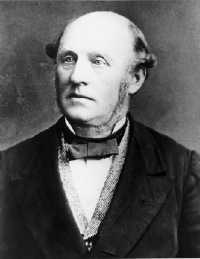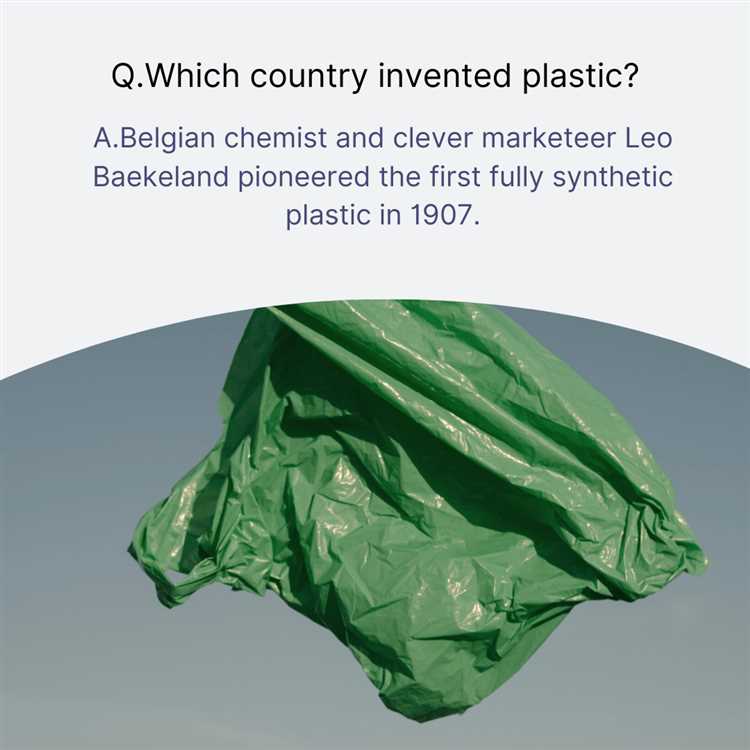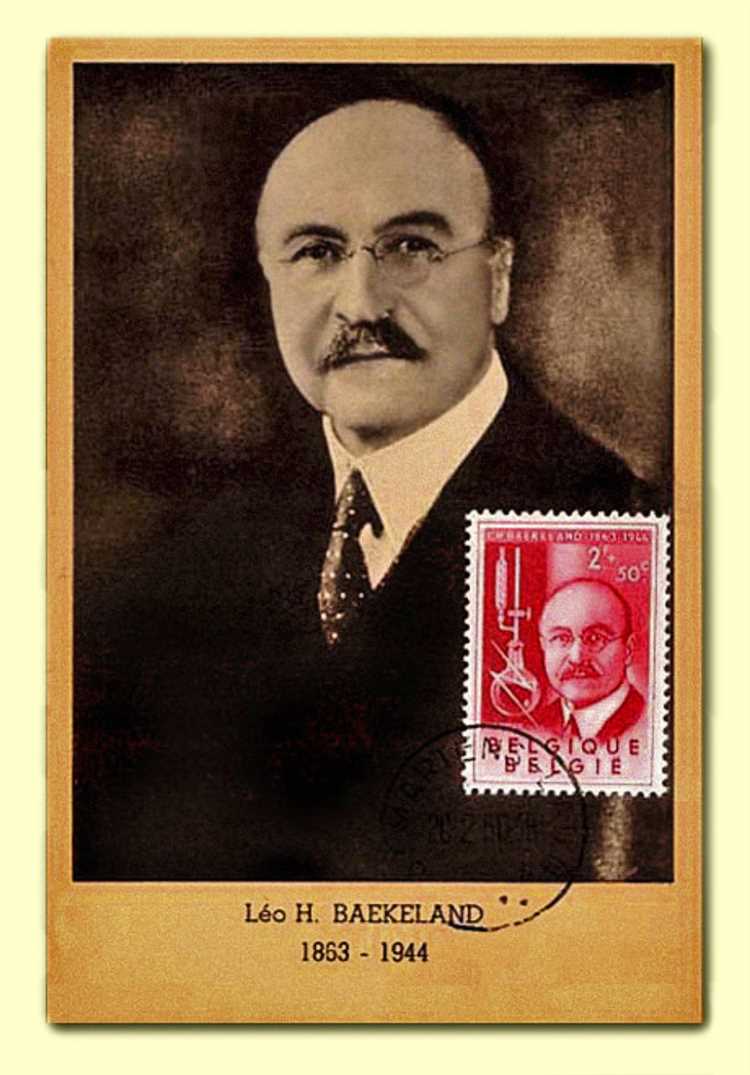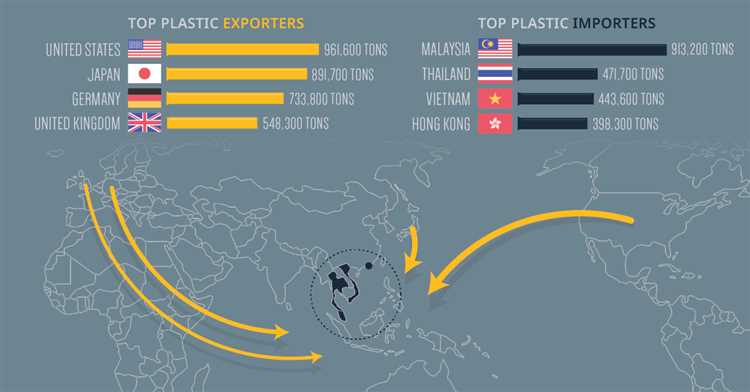
Plastic, a versatile and widely used material in our daily lives, has a fascinating history. Have you ever wondered which country can be credited with the invention of plastic? The answer might surprise you.
Contrary to popular belief, plastic was not invented in a single country. The development of plastic as we know it today is the result of contributions from various countries and individuals over the centuries. However, it was in the late 19th century that a breakthrough occurred, laying the foundation for modern plastic production.
Germany can be considered one of the pioneers in plastic technology. In 1907, Leo Hendrik Baekeland, a Belgian-born American chemist of German heritage, invented Bakelite, the world’s first fully synthetic plastic. Bakelite proved to be a revolutionary material with its heat-resistance, durability, and electrical insulating properties. It quickly gained popularity and found widespread use in numerous industries.
Nevertheless, the story of plastic does not end with Baekeland’s invention. Other countries, such as England, France, and the United States, also made significant contributions to the development of plastic technology. Each of these countries played a crucial role in advancing the industry, introducing new types of plastics, and improving manufacturing processes.
So, while it is difficult to attribute the invention of plastic to a single country, it is undeniable that the collective efforts of scientists, chemists, and inventors from various nations have shaped the modern plastic industry into what it is today.
- Overview of Plastic
- Environmental Impact
- The Future of Plastic
- The Origins of Plastic
- Plastic Invention in the 19th Century
- First Synthetic Plastic
- Industrial Revolution and Plastic
- Plastic Invention in the 20th Century
- Germany: Birthplace of Synthetic Plastic
- United States: Mass Production and Innovation
- Other Contributions
- Development of New Plastics
- New Materials and Applications
- Innovation and Future Prospects
- Mass Production and Plastic Revolution
- Question-answer:
- What is the history of plastic?
- Which country was the first to invent plastic?
- Why was plastic invented?
- How did plastic production evolve over time?
- What are the environmental impacts of plastic?
- Who invented plastic?
Overview of Plastic
Plastic is a synthetic material that has revolutionized various industries and aspects of our lives. It is a polymer composed of different molecules and is known for its versatility, durability, and inexpensive production. Plastic can be molded into various shapes, sizes, and forms, making it ideal for numerous applications.
Plastics are commonly made from petrochemicals, such as crude oil and natural gas. These raw materials are processed through a series of chemical reactions to create polymers, which are chains of repeating units. Polymers can be combined with additives, such as plasticizers and stabilizers, to enhance their properties.
One of the significant advantages of plastic is its lightweight nature, which makes it easy to transport and handle. It is also resistant to water, chemicals, and most forms of physical stress, making it ideal for packaging materials and containers. Plastic’s durability has made it a popular choice for various products, including toys, furniture, electronics, and automotive components.
Environmental Impact
Despite its benefits, plastic also has some negative impacts on the environment. One of the main issues is its durability, as it takes hundreds of years to decompose in the natural environment. This leads to the accumulation of plastic waste in landfills, oceans, and other ecosystems, causing harm to wildlife and marine life.
Plastic pollution has become a significant concern, with efforts being made to reduce the use of single-use plastics and promote recycling. In recent years, there has been a growing emphasis on developing biodegradable and sustainable alternatives to traditional plastic materials.
The Future of Plastic
As the demand for plastic continues to grow, researchers and scientists are working towards developing innovative solutions to address its environmental impact. This includes the development of bioplastics, which are made from renewable resources, such as corn starch and sugarcane.
Advancements in technology and material science are also paving the way for the production of more sustainable and recyclable plastics. The use of recycled plastics and the implementation of circular economy principles are becoming increasingly important in reducing plastic waste and promoting a more sustainable future.
| Advantages of Plastic | Disadvantages of Plastic |
|---|---|
| Versatile and customizable | Long decomposition period |
| Durable and resistant to water and chemicals | Plastic pollution and harm to the environment |
| Inexpensive to produce | Dependency on fossil fuels |
The Origins of Plastic
Plastic, as we know it today, is an incredibly versatile material that is used in numerous industries and everyday products. But where did plastic come from? Who were the pioneers behind its invention?
The history of plastic dates back to the mid-19th century, with the first major breakthrough being made by Alexander Parkes, an English inventor. In 1862, Parkes introduced a material called Parkesine, which was derived from plant cellulose and treated with various chemicals. Parkesine was the first true plastic and could be molded into different shapes when heated.
However, it was not until the early 20th century that plastic truly began to revolutionize industries and consumer goods. The invention of Bakelite by Leo Baekeland in 1907 marked a turning point in the development of plastic. Bakelite was the first synthetic plastic and was created by combining phenol and formaldehyde. It was an incredibly heat-resistant and durable material that found widespread applications in electrical insulators, radios, and telephones.
Throughout the 20th century, further advancements in plastic technology led to the development of various types of plastics, such as polyethylene, polyvinyl chloride (PVC), polyethylene terephthalate (PET), and many others. These different types of plastics offered unique properties that made them suitable for different applications, from packaging materials to construction products.
Plastic quickly became an integral part of our daily lives, but with its many advantages, it also brought challenges. The durability and resistance to decomposition that make plastic so useful also make it a major environmental problem. Today, efforts are being made to reduce plastic waste and find more sustainable alternatives.
In conclusion, the origins of plastic can be traced back to the mid-19th century, with inventors like Alexander Parkes and Leo Baekeland making significant contributions. From Parkesine to Bakelite and beyond, plastic has evolved and become an essential material in our modern world.
Plastic Invention in the 19th Century

The invention of plastic in the 19th century revolutionized the way we live and changed the course of human history. Although many people associate plastic with modern times, the origins of this versatile material can be traced back to the 19th century.
One of the key figures in the development of plastic was Alexander Parkes, an English inventor. In 1855, Parkes created the first man-made plastic called Parkesine. It was derived from cellulose, a natural substance found in plant cell walls. Parkesine was transparent, moldable, and could be used as a substitute for materials such as ivory and horn.
Another significant milestone in the history of plastic came in 1862 when the French chemist Alexandre-Edmond Becquerel discovered a process called celluloid. Celluloid was made by dissolving cellulose nitrate in a mixture of alcohol and camphor. This new material was highly versatile and could be molded into various shapes, making it ideal for use in photography, films, and even as a substitute for ivory in the production of billiard balls.
Later in the 19th century, other inventors and chemists made significant contributions to the development of plastic. John Wesley Hyatt, an American inventor, invented a type of plastic called celluloid in 1870. It was made by dissolving cellulose nitrate in a mixture of alcohol and camphor, similar to Becquerel’s celluloid. Celluloid became widely popular and was used in the production of combs, buttons, and numerous other products.
The invention of plastic in the 19th century laid the foundation for the rapid advancement of plastic technologies in the 20th and 21st centuries. Plastic has become an integral part of our daily lives, with countless applications in various industries. From packaging materials to medical devices, plastic has revolutionized the way we live and continues to play a crucial role in our modern world.
First Synthetic Plastic

The first synthetic plastic was invented in 1907 by Leo Hendrik Baekeland, a Belgian-born American chemist. Baekeland’s creation was called Bakelite and is considered the first truly synthetic plastic material.
Baekeland’s invention was a result of his experiments to find a synthetic substitute for shellac, a natural resin used in electrical insulation. He combined phenol and formaldehyde and subjected the mixture to heat, which resulted in the formation of a hard, moldable substance. Baekeland patented Bakelite in 1909 and it quickly gained popularity due to its electrical insulating properties, heat resistance, and durability.
Bakelite was a significant breakthrough in the plastics industry, as it was the first material that could be molded into any shape and retain its shape after cooling. It was widely used in various industries, including automotive, electrical, and consumer goods. The production of Bakelite marked the beginning of the era of synthetic plastics and revolutionized many aspects of modern life.
The invention of Bakelite paved the way for the development of other types of synthetic plastics, such as polyethylene, polyvinyl chloride (PVC), and polystyrene. These materials have since become essential components in numerous industries and have greatly impacted technology, construction, and everyday life.
Industrial Revolution and Plastic

The Industrial Revolution, which began in the 18th century, brought about significant advancements in technology, manufacturing, and societal development. This period of rapid industrialization had a profound impact on the development and widespread use of plastic.
During the Industrial Revolution, new machines and manufacturing processes were invented, allowing for the mass production of goods. This led to an increasing demand for materials that were lightweight, durable, and versatile. Plastic, with its various properties and potential applications, quickly became an attractive option.
Initially, plastic was made from natural materials such as rubber and shellac. However, these materials were expensive and limited in supply. In the mid-19th century, the discovery of cellulose, a compound found in plant fibers, paved the way for the production of a synthetic plastic.
In 1907, Leo Hendrik Baekeland, a Belgian-American chemist, invented Bakelite, the first fully synthetic plastic. Bakelite was made by chemically combining formaldehyde and phenol, creating a durable and heat-resistant material that could be molded into various shapes.
The invention of Bakelite revolutionized the plastics industry and opened up new possibilities for the use of plastics in manufacturing. It was widely used in electrical insulation, telephones, and various household products. Bakelite was followed by the development of other types of plastics, such as polyethylene and polyvinyl chloride (PVC).
The Industrial Revolution played a pivotal role in shaping the history of plastic. The advancements in technology and manufacturing made during this period allowed for the mass production and wide distribution of plastic products. Today, plastic is an indispensable material in various industries and everyday life, but its origins can be traced back to the transformative era of the Industrial Revolution.
Plastic Invention in the 20th Century
The invention of plastic in the 20th century revolutionized the manufacturing industry and transformed everyday life. Throughout the century, several countries made significant contributions to the development and advancement of plastic.
Germany: Birthplace of Synthetic Plastic
In the early 1900s, Germany became the birthplace of synthetic plastic with the invention of Bakelite. Developed by a German chemist named Leo Hendrik Baekeland in 1907, Bakelite was the first fully synthetic plastic. Baekeland’s creation was a durable, heat-resistant material that could be molded into various shapes, making it ideal for industrial and consumer applications.
United States: Mass Production and Innovation

In the United States, the mass production of plastic began in the 1930s. Companies like DuPont and Dow Chemical played a pivotal role in the development of new types of plastic and the creation of innovative manufacturing techniques. During World War II, the demand for plastic skyrocketed as it was used in various military applications.
One of the most notable contributions from the United States was the invention of polyethylene in 1933 by chemists Reginald Gibson and Eric Fawcett. Polyethylene soon became one of the most commonly used plastics due to its versatility and low cost.
Other Contributions
While Germany and the United States were at the forefront of plastic innovation, other countries also made important contributions. The United Kingdom, for example, played a significant role in the development of polyvinyl chloride (PVC) in the 1920s. Japan also made advancements in plastic technology, particularly in the fields of engineering plastics and electronic materials.
Throughout the 20th century, the invention and advancements in plastic revolutionized countless industries, from automotive to electronics, packaging to healthcare. Plastic became an essential material in everyday life, providing endless possibilities for manufacturing, design, and innovation.
Development of New Plastics
Over the years, scientists and researchers have made significant advancements in the development of new plastics. These innovations have revolutionized various industries and have created a wide range of products that we use in our daily lives.
New Materials and Applications
One area of focus in the development of new plastics has been the creation of materials with improved properties and characteristics. Scientists have been able to modify the chemical structure of plastics, resulting in materials that are stronger, more durable, and resistant to heat and chemicals.
These advancements have expanded the range of applications for plastics. For example, high-performance plastics are now used in the aerospace and automotive industries, where their lightweight and strong properties make them ideal for various components and parts.
Another area of development is the creation of biodegradable and sustainable plastics. With growing concerns about plastic pollution and the environmental impact of traditional plastics, researchers have been working on developing materials that can break down naturally, reducing their impact on the environment.
Innovation and Future Prospects
The development of new plastics is an ongoing process, with scientists constantly exploring new avenues and possibilities. As technology advances, researchers are able to manipulate the molecular structure of plastics to create materials with even more desirable properties.
In recent years, there has been a focus on developing plastics that are not only biodegradable but also sourced from renewable resources. This approach aims to reduce the dependence on fossil fuels and minimize the environmental impact of plastic production.
Furthermore, the integration of plastics with other emerging technologies, such as nanotechnology, has the potential to create even more advanced and versatile materials.
In conclusion, the development of new plastics has been a dynamic and ongoing process. Through innovation and advancements in science, the properties and applications of plastics have evolved, resulting in materials that are more durable, sustainable, and adaptable to various industries and environmental concerns.
Mass Production and Plastic Revolution
After its invention, plastic slowly spread across the world, but it was not until the 20th century that mass production techniques made it widely available. The mass production of plastic revolutionized the manufacturing industry and had a significant impact on various sectors.
One of the major breakthroughs in plastic mass production came in 1907 when Leo Hendrik Baekeland invented Bakelite, the first synthetic plastic that could be produced on a large scale. Bakelite was a versatile material that could be molded into various shapes and used in a wide range of applications.
The plastic revolution gained momentum during World War II when the demand for lightweight and durable materials increased. Plastic became a crucial component in the production of airplanes, vehicles, and various military equipment. The ability to mass-produce plastic items quickly and efficiently played a vital role in the war efforts of many countries.
After the war, the plastic industry continued to flourish, and more types of plastics were developed. Plastics like polyethylene and polypropylene were introduced, offering new possibilities for packaging and consumer products.
The 1950s saw a boom in plastic consumption as new products, like Tupperware containers, entered the market. Plastic also found its way into everyday items such as toys, furniture, and household appliances. The affordability, durability, and versatility of plastic made it a popular choice among manufacturers and consumers alike.
However, the widespread use of plastic also led to environmental concerns. The durability of plastic meant that it could take years or even centuries to decompose, leading to a growing issue of plastic pollution. Efforts to reduce plastic waste and develop more sustainable alternatives continue to be a global priority.
- The plastic revolution transformed industries and daily life by creating new possibilities for design and manufacturing.
- Plastic has become an integral part of sectors like healthcare, electronics, construction, and transportation.
- Advancements in plastic technology have led to the development of biodegradable and eco-friendly plastics.
In conclusion, the mass production of plastic revolutionized manufacturing and had a profound impact on various sectors of the economy. While plastic has brought numerous benefits, addressing the environmental challenges associated with its use remains an ongoing global concern.
Question-answer:
What is the history of plastic?
The history of plastic dates back to the 19th century when the first synthetic polymer was invented. Since then, the development and use of plastic materials have dramatically increased, revolutionizing various industries and modern life as a whole.
Which country was the first to invent plastic?
The first country to invent plastic was Germany. In 1869, a chemist named Eduard Simon discovered a method to create celluloid, which marked the beginning of modern plastic manufacturing.
Why was plastic invented?
Plastic was invented to meet the growing demand for a material that could replace natural resources such as wood, ivory, and tortoiseshell in various industries. It offered advantages such as durability, flexibility, and versatility, making it a revolutionary material.
How did plastic production evolve over time?
Plastic production evolved significantly over time. From the invention of celluloid in 1869, scientists and engineers continued to develop new types of plastic materials and production methods. The 20th century saw the commercialization of various plastic types, such as PVC, nylon, and polyethylene, leading to the widespread use of plastic in numerous applications.
What are the environmental impacts of plastic?
The environmental impacts of plastic are a result of its durability and widespread use. Plastic waste has become a major issue, with millions of tons ending up in landfills and oceans every year. It takes hundreds of years for plastic to decompose, leading to pollution, harm to wildlife, and other ecological problems. Efforts to reduce plastic waste and promote recycling are crucial to mitigate these impacts.
Who invented plastic?
Plastic was not invented by a single person, but rather through a series of discoveries and inventions by various scientists and inventors. However, the first synthetic plastic, called “Parkesine,” was invented by Alexander Parkes, an English inventor, in 1856.